Description
Facial Area
• Forehead: Start from the midpoint of the hairline on the forehead, then gently and slowly scrape towards the temples on both the left and right sides respectively. You can also start from the midpoint of the forehead or the area between the two eyebrows, and scrape towards the temples separately. This helps promote blood circulation in the forehead, relieve fatigue, and enhance the complexion.
• Around the Eye Sockets: Use a corner of the gua sha board at a 30–45 degree angle. Start from the innermost part of the lower eye socket and gently scrape slowly towards the temples. This can relieve eye fatigue and improve issues such as eye puffiness and dark circles. However, it is important to close your eyes during scraping and avoid pressing the eyeballs.
• Cheeks: Tilt the gua sha board at a 30–45 degree angle, place it on one side of the bridge of the nose, first gently and slowly lift and scrape towards the temples, then pull down from the bridge of the nose to the collarbone area of the neck. This can promote lymphatic drainage in the cheek area, enhance the facial contour, and reduce facial fat.
• Chin: Use the end of the gua sha board at a 30–45 degree angle, place it at the midpoint of the chin. First, scrape along the jawline to the ear, then pull down from the ear to the collarbone area of the neck. This helps improve chin puffiness, firm the skin on the chin, and reduce the appearance of a double chin.
Full Facial Gua Sha Procedure (Step-by-Step)
1. Pre-Procedure: Apply a Medium (Skin Protection Is Essential) • Take 3–5 drops of facial-specific medium (e.g., sweet almond oil, lightweight facial serum). Rub the medium between your palms to warm it, then press and pat it evenly across the entire face (covering the forehead, eye area, cheeks, and jawline). • Core Requirement: Ensure a thin, uniform protective layer forms on the skin’s surface. Avoid localized dryness—this prevents skin pulling and (stratum corneum) damage during scraping.
2. Formal Scraping: Follow 5 Precise Routes (Symmetric for the Left Side) Perform the following steps on the right side of the face first, then repeat symmetrically on the left. Each route should be repeated 5–8 times, and all movements must follow an anti-gravity direction (to avoid skin sagging). Route Starting Point Endpoint Operation Details 1 Glabella (between the eyebrows) Temples (on both sides of the forehead) Hold the gua sha tool horizontally against the forehead; scrape slowly from the center to the temples. 2 Outer corner of the eye (Tongziliao Point) Inner corner of the eye (Jingming Point) Use the rounded end of the tool. Gently glide it along the lower eye socket bone (avoid the fat pad under the eyes to prevent puffiness).
3 Inner cheek (near the nose, along the cheekbone) Outer cheek (near the temples, along the cheekbone) Scrape diagonally upward along the cheekbone. Do not press hard on the apples of the cheeks.
4 Lower cheek (jawline) Upper cheek (in front of the ears) Follow the natural texture of the cheek muscles; keep the tool close to the skin and lift gently as you scrape.
5 Center of the chin Jawline sides (behind the ears, near lymph nodes) Scrape upward along the edge of the jawbone. Slightly more pressure can be used here (the jaw area has thicker skin).
II. Key Techniques: 3 Critical Tips (For Efficacy & Safety) 1. Pressure Control: Use “Subtle, Deep Pressure” (Not Force) Relax your arms. Channel force from your shoulders and neck down to your wrists, then transfer it gently through the edge of the gua sha tool to penetrate just below the skin’s surface—similar to the “deep, gentle pressure of pressing an acupoint with your fingertip.” Ensure no slipping or friction-induced heat occurs during movement.
2. Angle Control: Keep the Tool at 15°–30° to the Skin • Angle < 15°: Prone to slipping, with little to no effect on circulation. • Angle > 30°: Likely to press too hard, causing redness, pain, or skin irritation.
3. Direction Rule: Always Scrape Against Gravity All movements must be upward or diagonally upward (e.g., from the bottom to the top of the forehead, from the jawline to the area in front of the ears). Never scrape downward—this can worsen skin sagging over time.
III. Expected Results: Realistic Expectations (Consistency Is Key) Result Type Specific Effects Key Notes Short-Term Boosts blood circulation → Reduces dullness and morning puffiness → Leaves skin temporarily radiant and taut. These effects may appear after a single session, as they come from immediate improved circulation. Long-Term Helps reduce “dehydration fine lines” (e.g., fine lines around the eyes) caused by poor circulation. Requires consistent practice + daily moisturization. Cannot eliminate deep wrinkles (e.g., nasolabial folds, forehead wrinkles).
IV. Safety Guidelines:
4 Taboos & Precautions
1. Contraindicated Groups (Do NOT Perform Gua Sha If You Fall Into These Categories) • Skin with breaks (cuts, inflamed acne). • Sensitive skin (prone to redness, stinging, or irritation).• Facial fillers (e.g., hyaluronic acid injections) or facial implants.
2. Frequency Control Limit to 1–2 times per week. Daily scraping damages the stratum corneum, leading to thinner, more sensitive skin—a common concern for U.S. consumers with pre-existing skin sensitivity.
3. Post-Procedure Care • If the medium is oily, rinse your face gently with lukewarm water. • Immediately apply a moisturizing cream or serum afterward. This prevents moisture loss (a critical step for maintaining skin barrier health, especially in dry U.S. climates).
Neck Area
• Anterior Neck: Start from below the chin and scrape down along the midline of the anterior neck to above the collarbone. This helps promote lymphatic circulation in the neck, improve loose neck skin, and reduce neck wrinkles. However, it is important to use a gentle technique and avoid excessive force to prevent damage to the skin and neck blood vessels.
• Posterior Neck: Start from the hairline on the posterior neck and scrape down along the trapezius muscle. This can relieve tension and soreness in the neck muscles, improve blood circulation in the neck, and effectively alleviate neck discomfort caused by prolonged head-down postures. Shoulder Area The main areas to scrape are the trapezius muscle in the shoulder-neck region and the deltoid muscle of the shoulder. Scrape from the neck towards the outer side of the shoulder. This helps relax the shoulder muscles, relieve shoulder stiffness and pain, improve shoulder mobility, and has a certain auxiliary therapeutic effect on conditions such as frozen shoulder and shoulder-neck syndrome.
Back Area
• Both Sides of the Spine: Use the smooth surface of the gua sha board, scrape down the back at a 45-degree angle with the skin. Start from the neck and scrape down along both sides of the spine until reaching the lower back. You can appropriately increase the force in the areas with thick muscles on both sides of the spine to enhance the stimulating effect. This can regulate the functions of the internal organs and boost the body’s immunity.
• Around the Scapulae: Scrape around the edges and the inner side of the scapulae. This can relieve fatigue and pain in the muscles around the scapulae, improve local blood circulation, and effectively alleviate back discomfort commonly experienced by people who work at desks for long periods. Arm Area
• Outer Arm: Start from the shoulder and scrape down along the muscles such as the deltoid and triceps brachii on the outer side of the arm towards the wrist. This can promote qi and blood circulation on the outer side of the arm, relieve fatigue in the arm muscles, and has a relaxing effect on people who frequently use their arms, such as typists and athletes.
• Inner Arm: Start from the wrist and scrape up along the muscles such as the biceps brachii on the inner side of the arm towards the shoulder. This helps regulate the qi and blood of meridians such as the Heart Meridian and Pericardium Meridian, has a certain regulatory effect on heart function, and at the same time improves blood circulation and metabolism of the skin on the inner side of the arm.
Leg Area
• Anterior and Outer Thighs: Start from the root of the thigh and scrape down along the muscles on the anterior and outer sides of the thigh towards the knee. This can promote blood circulation in the legs, relieve fatigue and soreness in the leg muscles, and improve issues such as leg swelling and a heavy feeling caused by prolonged standing or sitting.
• Posterior Calves: Start from the hollow behind the knee and push and scrape down towards the ankle. This can stimulate the meridians and acupoints on the posterior side of the calf, promote the circulation of qi and blood in the legs, reduce calf edema, and at the same time alleviate conditions such as calf muscle spasms and pain.
Waist Area
Scrape along the waist muscles from both sides of the spine towards the outer side of the waist. This can relieve tension in the waist muscles, improve blood circulation in the waist, and has a certain auxiliary therapeutic effect on waist pain caused by conditions such as lumbar muscle strain and lumbar disc herniation.
Notes on Terminology:
• “Gua sha” is a traditional Chinese therapeutic technique, and the term is commonly used directly in English medical and wellness contexts without literal translation, as it refers to a specific practice.
• Meridians (e.g., Heart Meridian, Pericardium Meridian) are concepts in Traditional Chinese Medicine (TCM); their translations follow standard TCM terminology used in English-speaking wellness communities.


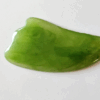
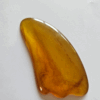
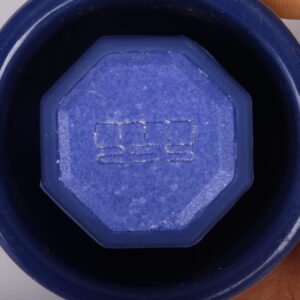
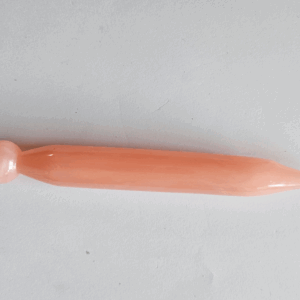
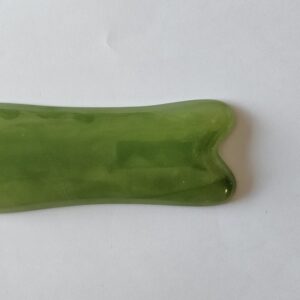
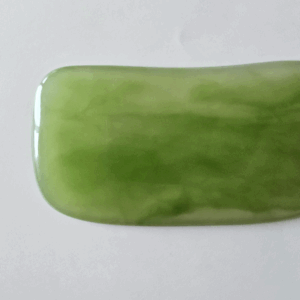
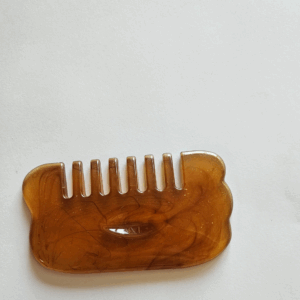
Reviews
There are no reviews yet.